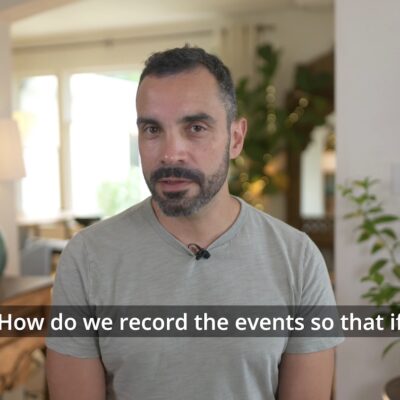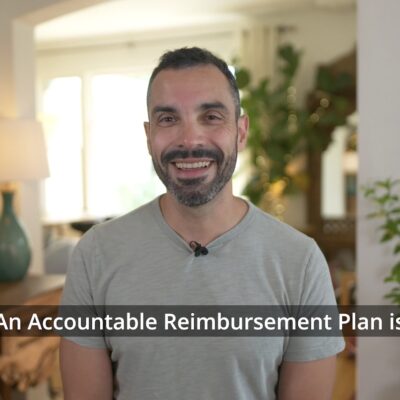
Resources
Filing the Tax Returns using the Augusta Rule

Intro
Of course, it is an advantage if your tax person is an Augusta Rule expert. But if they’re not (and most aren’t), then it’s not really a problem. You just need to make sure they have all the necessary paperwork.
Now, we can hear you from here: “The last thing I need is to spend more time organizing paperwork for my CPA.”
We agree. If you join the “Free Money” Plan, all you have to do is connect your tax accountant with us, we’ll handle the paperwork (for a fee, of course).
Or you could DIY it using the instructions in the rest of the article. Only you know what’s worth more: your time or our (modest) fees.
What if my tax accountant doesn’t want to work with The Augusta Rule™?
This might happen. To find out if they will or won’t, you can sign up for a Strategy Call. During the call you’ll provide your tax pro’s contact info and we’ll reach out to see if they’re willing to work with us.
Once we’ve explained the legal aspects to them, most accountants are comfortable with preparing and signing the tax returns.
But every so often, we do run into “the-old-ways-are-best” CPAs or EAs who set their jaws, dig their heels in, and refuse to learn how to save their clients more money.
If your CPA/EA happens to be one of these hardliners…
You have two options:
- Keep working with your old-school CPA, and keep paying more taxes than you need to; or
- Switch to a tax pro who will work with us to help you earn tax-free income.
If you choose option 1, no need to read the rest of this article. We can’t help you. If you choose option 2, you’ll need to find a tax return preparer who will work with you to implement the Augusta Rule. If you’re working with us, we’re happy to save you the trouble of a search by referring you to a Pro who can help you save money with the Augusta Rule.
I’m just going to DIY it. What paperwork do I need?
The truth is, you’ll never file most of your paperwork with the IRS, or even give it to your CPA. Most of it is for your personal record-keeping and should be backed up in at least two places (for example, on your computer and in the cloud). Unless you get audited, you can then ignore these records without losing sleep (at least over your paperwork).
But what about the paperwork you do need?
An Extra 1099
First, you’ll need a 1099 for your business. Whoever is in charge of preparing these at your business will need to create one that includes the amount of rent your business paid to you in the last calendar year. Your business will then send this extra 1099 to your CPA.
That is technically the correct (and more audit-resistant) approach, and it’s the one we recommend. But many businesses skip this step without running into any problems down the road.
If you did skip this step and, for some unlikely reason, were then audited by the IRS, your Augusta Rule deductions would probably still be safe; all your other documentation would help you defend your deductions. You might be on the hook for a $310 “Missed 1099” penalty.
Our recommendation? Do the 1099. It’s not that much work, and it might save you a few hundred dollars in the future.
Your Schedule E on Form 1040
Schedule E is the section of the Form 1040 where you report your personal rental income. You’ll need to provide your CPA with the amount of rent your business paid to you for the use of your personal residence. This rent number should be the gross income, of course.
It should go without saying, but the amount of rent you report in Schedule E should match the amount of rent paid that’s listed in the 1099. There is (hopefully) a 1099 out there with your name on it.
Next, there is another section within your Schedule E labelled “Other Deductions.” Here, you need to report a deduction that is equal to the exact amount listed under your rental income. Label the deduction “IRC Section 280A(g) Exclusion” or similar.
The result? Your Schedule E shows a net zero additional income.
Conclusion
That’s mostly it. Not too bad, right? We just have a couple more suggestions.
First, your business should already have a well-maintained set of QuickBooks (or some equivalent, like Xero). These books should show “Rent Expense” as a line item for the amount paid to you for the use of your personal residence. This is exactly what your CPA wants to see. He’ll locate this number and enter it as a deduction on your business’ tax return.
What do you get for all your effort? Your business receives a tax deduction for the rent it paid to you. And on your Schedule E, net income from that rent shows up as $0.00. And if you multiply the business deduction by your “tax bracket” (including state taxes in most cases), then combine that with your tax-free rental income, you’ll be able to see the total amount of money that stayed in your business and personal pockets.
As always, if you are a client of ours and have any questions or concerns related to your tax filing, feel free to reach out to us. And if you’re not part of our community yet, reach out anyways. We’re happy to help you identify the right solution for your rent-related tax filings.
Common Mistakes to Avoid
- Forgetting to issue the 1099
- Not matching Schedule E income with the 1099
- Missing the rental deduction on your business return
- Submitting excessive documentation to the IRS (they don’t want it, at least not until an audit)









